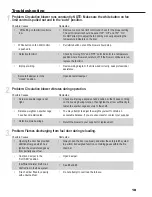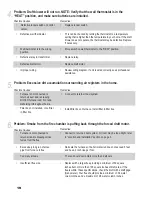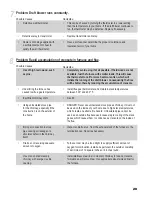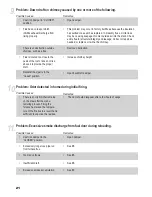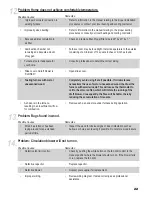
9.
Plug motor into the back of the electrical control
center.
10. C
onnect the thermostat wire (not included) to the
two (2)
posts located on the side of the control center. For
convenience, you
might consider locating the wall
thermostat next to your existing thermostat in your
home. The thermostat MUST be installed
for the
furnace to operate.
11.
Plug the 3 pronged grounded plug into a grounded
electrical outlet.
Chimney Types and Recommendations
See Diagram on page 8.
Safety requirements demand that your Shelter Furnace be connected to “Class A” HT2100 All Fuel, or stainless-lined masonry chimney
ONLY.
By definition, “Class A” refers to either a lined masonry chimney or all fuel factory-built chimney. Although experts have expressed
differing opinions as to which system is the best, it is a matter of what you find most suitable. Regardless of your choice of chimney
type, for models SF1000, a minimum 6-inch diameter chimney is needed. In order to create the most effective draft, the chimney size
should not exceed 12 inches, with a maximum .08 water column inches of draft. The flue draft can be measured with the use of a draft
gage or manometer. If there is more than .08 water column inches of draft, it can be adjusted with the installation of a flue damper. The
stovepipe required to connect the furnace to the chimney should be a minimum of 24 gauge black or stainless steel. NEVER USE
GALVANIZED PIPE. Horizontal run should not exceed 5 feet and should have a minimum rise of 2 inches per foot. No installation
should have more than 2 elbows, a 45° elbow is recommended over a 90° elbow.
As a safety precaution, all pipe selections should be fastened together with a minimum of 3 sheet metal screws. For your convenience,
the crimped male ends of the pipe should point toward the furnace to form drip-free connections, thereby reducing the possibility of
creosote leakage from the joints. Installing a non-UL-listed heat reclaimer in the pipe is not recommended because it reduces the stack
temperature thus causing creosote formation. Installing a manually operated cast iron damper in the stovepipe between the furnace and
the chimney pipe is recommended. The addition of a damper will greatly assist in regulating the fire and achieving optimum results.
Always install a tee with clean-out cap to the chimney outlet on the back of the furnace. This allows for easier cleaning of the chimney
system. Never use a 90° elbow off the back of the furnace.
When using a masonry chimney, you must line the chimney with a stainless steel liner. The stainless steel liner will keep the chimney
temperature hotter for better draw and significantly reduce the creosote formation in the chimney. If using this method, a 6-inch
stainless liner should be used for models SF1000.
5. Mount the forced draft blower with 3 ¼-20 x 3/4 inch bolts (provided).
Attach with 3- 1/4-20 x 3/4" Bolts (provided)
6.
Attach Fan limit with 3 #
8
screws in pre-drilled holes.
7.
Mount the electrical control center with 4 #
8
screws (provided)
8. Secure the flex conduit to the side of the furnace using the
brackets with two (2) screws provided.
DETAIL
BSCALE
1
B
Fan Limit
Control:
To install, remove cover,
attach with three (3) #8 sheet
metal screws and replace
cover.
Thermostat Terminals
Attach the two wall
thermostat
wires to the
terminals shown.
7
Summary of Contents for Shelter Furnace SF1000
Page 2: ...This Page Intentionally Blank...
Page 26: ...This Page Intentionally Blank 23...
Page 28: ...This Page Intentionally Blank...





















